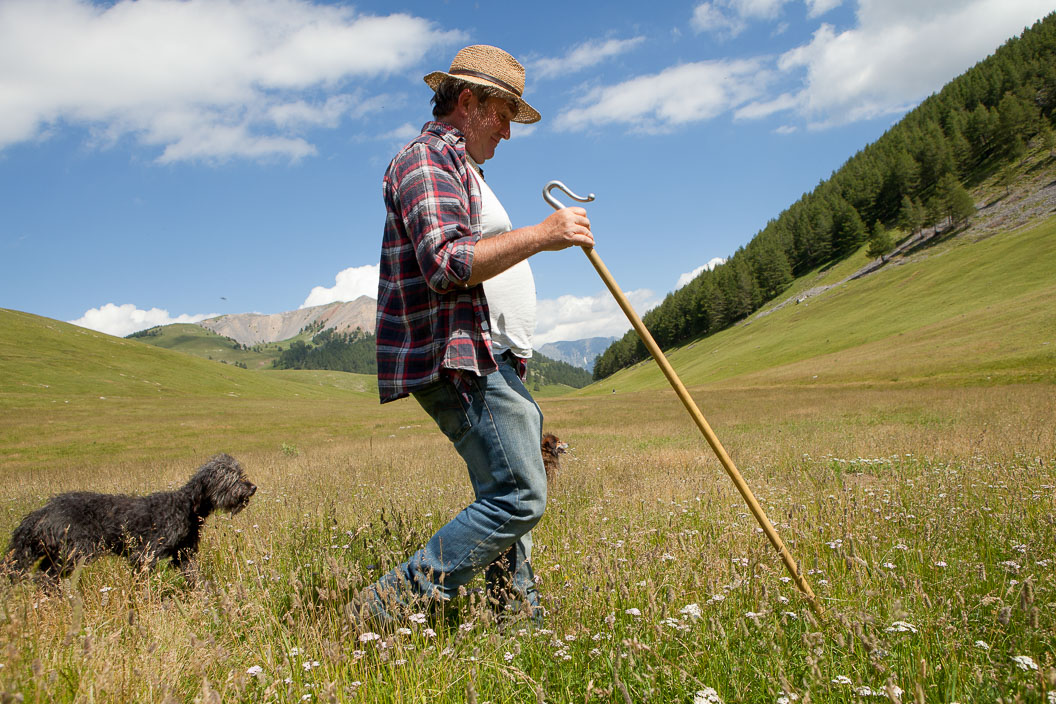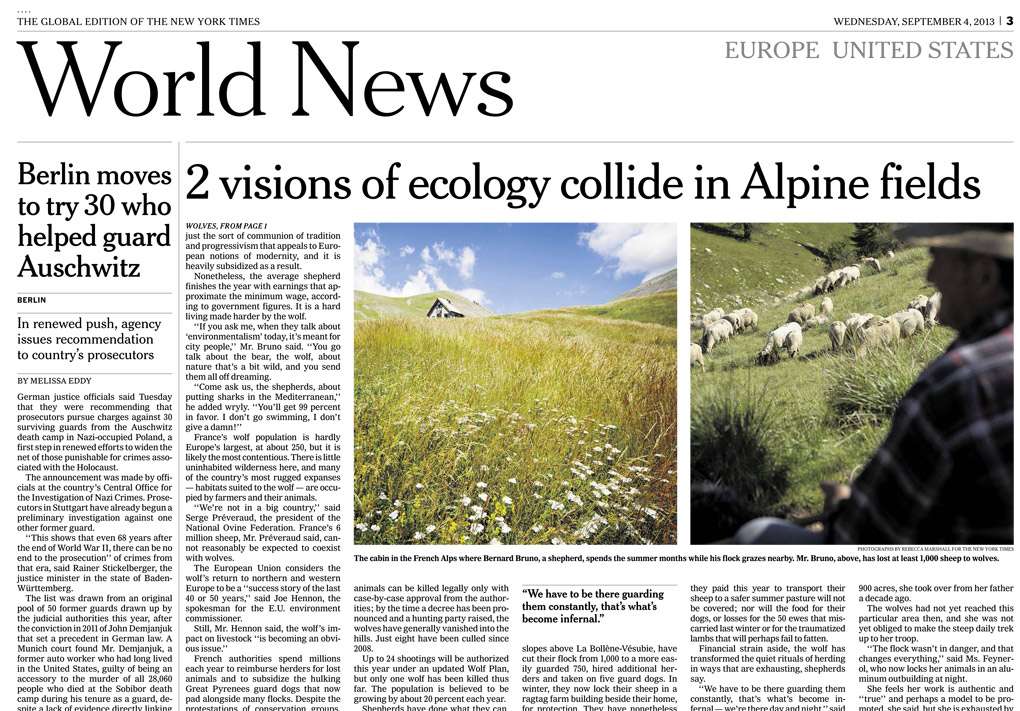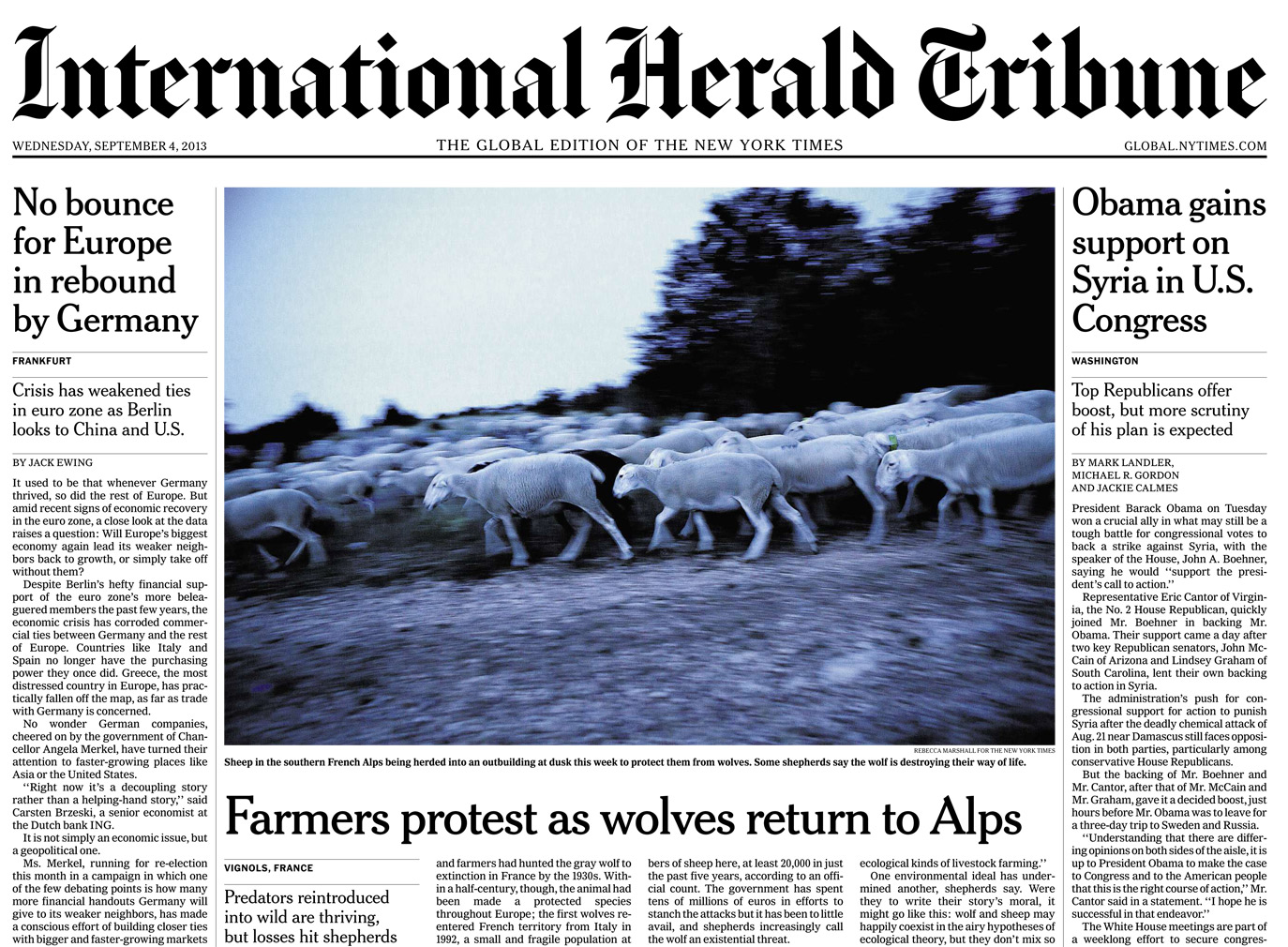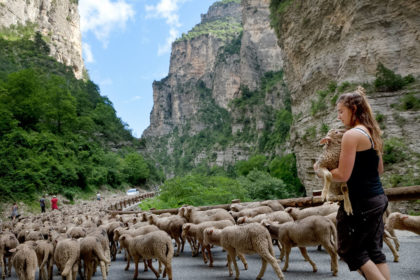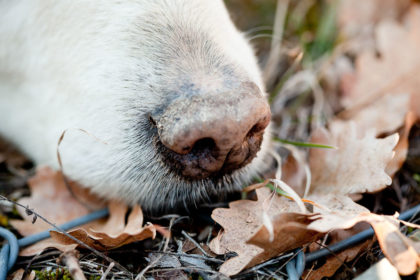The vultures struck me as remarkably sinister; dark figures slowly circling in the blue sky above the ridge. Bernard, the shepherd, leaned on his staff and sighed as we watched them. “Wolves must have been there in the last 48 hours“, he said. The vultures go where the wolves go, for obvious reasons.
I had never seen vultures up close before and didn’t know that they are to be found in the South of France. Neither did I know that a community of wolves is thriving here – and threatening to kill off a traditional way of life.
It was a hot August day in the French Alps and after an hour’s steep walk uphill from the nearest accessible point by vehicle (‘road’ would not be an appropriate word for the treacherous and stony path I drove up), a New York Times journalist and I had made the long journey to the Plateau de Longon to find out more.
Wolves kill 20 000 sheep in France
Wolves were once hunted to extinction in France. However, over the last ten years, a French wolf population has been firmly re-established, initially in Le Parc du Mercantour – the national park that straddles the mountainous border between France and Italy. Today, encouraged by conservationists, firmly protected in law and apparently delighting both in their new status and the prevalence of fat lambs that graze free on the mountains, wolves are threatening the existence of another rare breed in France: traditional sheep herders [shepherds that take their flocks to high pastures in summer]. The numbers show how serious the problem is: 20,000 sheep have been killed by wolves in France in the last 5 years.
No running water and donkey deliveries
Bernard Bruno is the kind of French shepherd that you might like to imagine in a nostalgic daydream of rural France, but basically believe no longer exists. The very-real Bernard lives far from the bustle of the French Riviera at his farm in Saint Vallier-de-Thiey, a village over 50 km from Nice, in the foothills of the Alps. Every summer, he conducts transhumance with his flock of 2 000 sheep, walking them for 7 days and 7 nights up to mountain pastures on Plateau de Longon, deep in the Mercantour National Park. Here he lives in a hut without running water, toilet or mains electricity for 3 months every year, bringing up supplies from the nearest village from time to time by donkey.
His directions to the writer and I were simple. “Walk for an hour up the footpath, I’ll see you.” And see us he did, from his cabin perched atop a mountain pasture, to which only the barest of little paths could be made out in the long grass. I guess that for someone whose occupation it is to scan the hillside, a tall English photographer and a journalist fresh from Paris could not have been easily missed among the rocks and marmots.
Philosophy and stove-top cooking
“I wonder what on earth he does all day“, Scott wondered aloud, as we puffed our way up the mountain, worlds away from wifi networks, coffee shops and other human beings. “He must go out of his mind with boredom and loneliness“. However, after a few hours spent in Bernard’s company, and that of his sheep (who were grazing a further hour’s uphill walk from the hut), I can attest to the fact that Bernard is far from bored. His powers of observation are extraordinary, thanks perhaps to considerable time invested watching the wildlife in his valley. Collecting wild mushrooms for breakfast is child’s play for Bernard; this is a man who will pick and infuse hundreds of Arnica flowers in olive oil, leaving them for the required 40 days in bright sunshine to make a tincture. Over his portable gas stove, Bernard prepares and cooks a fine daube [Provençal stew] from the occasional chamois that gets ‘stuck in the fence’ (hunting is strictly forbidden in the national park). Not to mention the time-consuming proper South of France-style siestas in his hut (a hut that doesn’t exist officially, for obscure tax / administrative reasons) and the occupation of pondering his uncannily spot-on philosophies about modern living. At the end of the day, the extra hours that Bernard needs to put in to herd his sheep into a makeshift fold beside the hut at night to protect them from wolf attacks are quite an inconvenience.
Skilled at evading death and photographers
I didn’t see or photograph a wolf, of course. I did take pictures of the grizzly corpse over which vultures had been circling though, and a (fairly fresh) wolf poo, but wolves are pretty bright creatures, by all accounts. I imagine that they saw me coming even before Bernard did. Despite the government this year having authorised the killing of 24 wolves nationwide to try to control the rapidly expanding population and appease sheep herders, hunting parties have thus far only managed to kill one animal.
It was in fact an image I photographed the next day, of another shepherd’s flock at dusk on a mountainside closer to Cannes, that made the cover of the International Herald Tribune. While a wolf was not actually in the image, the sheep were being herded back to the fold just as the colours were leaving the landscape, and the fear in the edgy mass movement of the flock in the near-twighlight was as palpable as if there had been a wolf in view, silhouetted on the horizon.
You can read the full story here:
New York Times: As Wolves Return to French Alps, A Way of Life is Threatened
